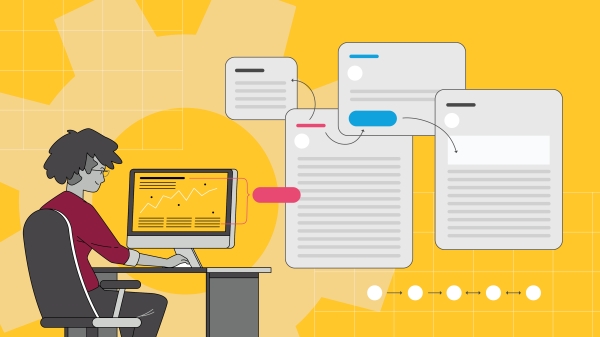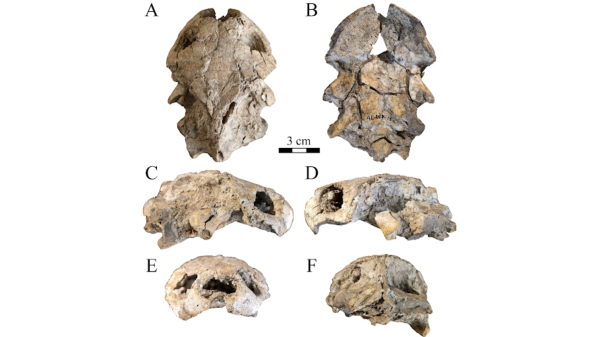ASU study links social media likes to digital dating abuse behaviors in adolescents

Research from the ASU Department of Psychology has identified precursors to digital dating abuse behaviors — online harassment, threats, monitoring and coercion — that are experienced by many adolescents. The study was published in Computers in Human Behavior. Photo courtesy Unsplash
Just about half of adolescents admit to nonstop use of TikTok, Snapchat and Instagram, according to a Pew Research survey. And sometimes that constant scrolling and "liking" leads to conflict between romantically involved teens.
Previous research has found that 50–75% of adolescents have encountered digital dating abuse behaviors — such as online harassment, threats, monitoring or coercion — with their romantic partners.
New research from the Arizona State University Department of Psychology has identified precursors to these behaviors. The work, which was published recently in Computers in Human Behavior, assessed how adolescents interpreted a romantic partner interacting with other people on social media.
“Dating and romantic relationships are an everyday part of being a teenager, and social media amplifies everything teens are going through — the positive and amazing parts of being in love but also the negative aspects of dating," said Thao Ha, associate professor of psychology and a co-author on the study. "It’s important to understand why, when and how social media is actually harmful so that we eventually are better able to support teens navigating their romantic experiences and to prevent digital dating abuse from happening in the first place.”
‘You liked that post?!’
The study consisted of two experiments. The first included younger adolescents in middle school and high school, a time when dating is starting to become part of their lives or their friends’ lives. The second included older adolescents who were in college.
A racially and ethnically diverse group of 717 sixth- and ninth-grade students participated in the first experiment. They were shown an Instagram post and told to imagine a romantic partner liking it.
The researchers examined the impact of a romantic partner liking an image of someone who was the same or a different gender as the participant. They also assessed whether familiarity with the person shown in the post or the total number of likes on the post affected the reactions.
The participants reported they would feel upset and jealous when thinking about their romantic partner liking an image of someone who was the same gender as they are. Familiarity and the number of likes did not contribute to negative feelings.
The adolescents also reported being likely to confront their partners about liking the post and to monitor their partners’ social media behavior. The participants did not indicate they would attempt to control their partner’s social media behavior, such as asking them to unfollow the account.
“The effect sizes were quite strong for feeling upset and jealousy, and for the digital dating abuse behaviors, even though these were not based on actual instances of a romantic partner liking someone else’s photo but instead were hypothetical scenarios,” said Selena Quiroz, an ASU psychology graduate student and first author on the study. “These findings show how distressing social media interactions can be to teens. These are not trivial events to teens.”
The role of jealousy in digital dating abuse
The second study was designed to replicate the findings from the first study in a group of older adolescents. It also examined the influence of the attractiveness of the person in the Instagram post.
“We included a systematic replication in this study to reproduce the main finding and to expand on it by determining whether there was something about the photos being used that was driving how the adolescents reported feeling,” said Samantha Anderson, an assistant professor of psychology at ASU who is an expert in reproducing scientific findings.
The second participant group consisted of 140 college students, who each viewed actual posts of young adult men and women from public Instagram profiles.
As in the participant group made up of younger adolescents in sixth and ninth grades, imagining a romantic partner liking a post of someone of the same gender as the participant resulted in feelings of jealousy in the older adolescents. Attractiveness of the person in the social media post also shaped how the older adolescents felt: They reported feeling most jealous when thinking about their partner liking a post of an attractive individual who was the same gender as them.
These participants reported they would respond by confronting their romantic partner, attempting to control their online behavior and monitoring their online behavior.
“These findings support the notion that jealousy can be a big trigger for digital dating abuse, possibly because social media can easily turn small interactions into big events,” Quiroz said.
A first step toward reducing digital dating abuse
Linking feeling upset and jealous to being willing to engage in digital dating abuse behaviors is an important first step in understanding the mechanisms that lead to negative outcomes, the authors said. Knowing which emotions are involved can inform interventions aimed at reducing the high rate of adolescents engaging in and experiencing digital dating abuse.
“This study joins other research in underscoring the importance of moving beyond screen time to focusing on understanding what’s happening on the screen and how it affects teens,” Ha said. “The goal is to support the socioemotional development of teens as they are learning all about romantic relationships and digital relationship experiences.”
More Science and technology

New research by ASU paleoanthropologists: 2 ancient human ancestors were neighbors
In 2009, scientists found eight bones from the foot of an ancient human ancestor within layers of million-year-old sediment in the Afar Rift in Ethiopia. The team, led by Arizona State University…

When facts aren’t enough
In the age of viral headlines and endless scrolling, misinformation travels faster than the truth. Even careful readers can be swayed by stories that sound factual but twist logic in subtle ways that…

Scientists discover new turtle that lived alongside 'Lucy' species
Shell pieces and a rare skull of a 3-million-year-old freshwater turtle are providing scientists at Arizona State University with new insight into what the environment was like when Australopithecus…